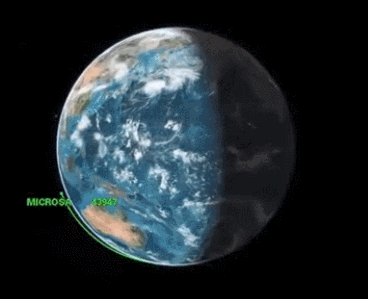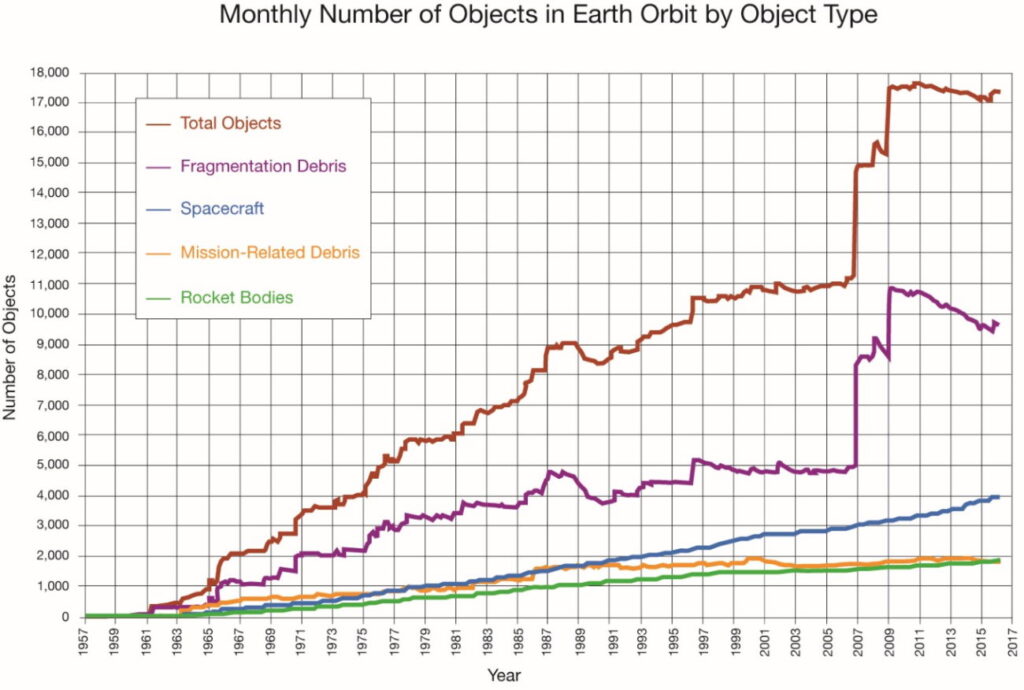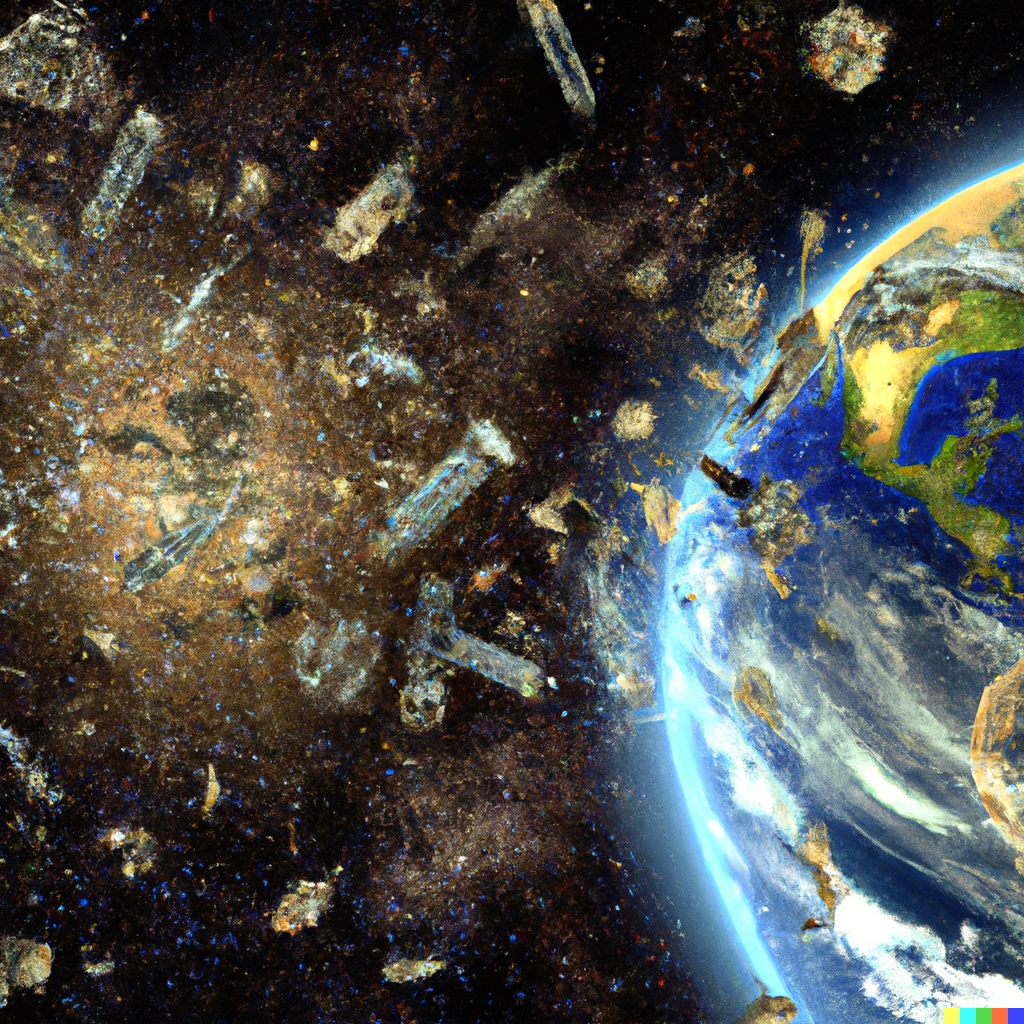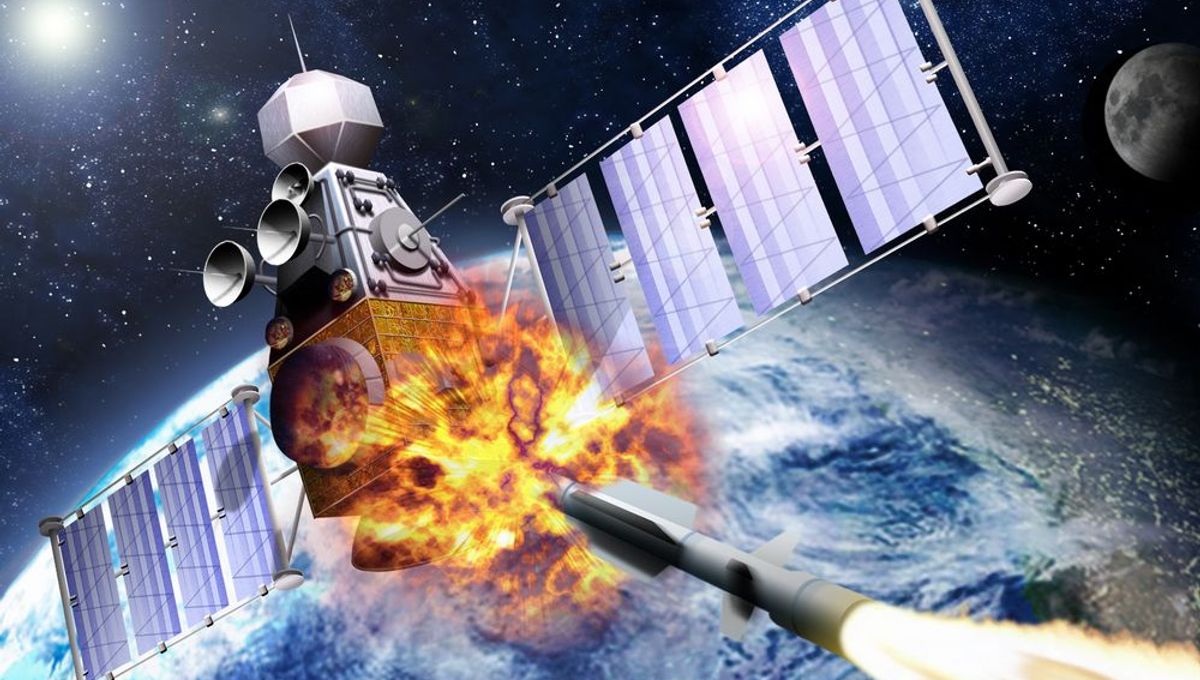Updated April 14th, 2023
On 11 January 2007, China conducted an anti-satellite missile test. A China weather satellite—the FY-1C polar-orbiting satellite of the Fengyun series, at an altitude of 865 kilometers (537 mi), with a mass of 750 kilograms (1,650 lb) —was destroyed by a kinetic kill vehicle traveling at a speed of 8 km/s (18,000 mph) in the opposite direction. A Head-On Engagement attack like this has the advantage, however, of greatly increasing the effective range at which missiles or kinetic weapons can be used. Many kinetic weapons have an effective range in a head-on engagement on the order of three or four times or more of that in a tail-chase engagement. The target satellite effectively flies right into the weapon(s) fired at it. The kinetic weapon China launched was a multistage solid-fuel missile from Xichang Satellite Launch Center.
On 27 March 2019, India tested an anti-satellite weapon during an operation code-named Mission Shakti The target of the test was a satellite in a low Earth orbit, which was hit by a kinetic kill vehicle. The interceptor struck a test satellite at a 283-kilometers (176 mi) altitude in low earth orbit (LEO), The missile reportedly hit the satellite with an accuracy of less than 10 cm!

In April 2011, debris from the 2007 Chinese test passed 6 kilometers (3.7 mi) away from the International Space Station.
As of April 2019, 3000 of the 10,000 pieces of space debris routinely tracked by the US Military as a threat to the International Space Station were known to have originated from the 2007 Chinese satellite shootdown. But to be clear, China is not the only actor to purposefully shoot down a satellite. The US, Russia, and India all have conducted tests in anti-satellite operations
16 November 2021 Russia carried out a missile test, destroying one of its own satellites. The action has caused international outrage because the debris could threaten the International Space Station (ISS) and satellites in low-Earth orbit. The missile destroyed an old Soviet spy satellite, called Kosmos 1408, which was once part of Russia’s Tselina radio signals surveillance program. The debris field from the A-Sat test is found at an altitude of between 440km and 520km above Earth, threatening the ISS, China’s Tiangong space station, and other spacecraft.
Since 1957, mankind has launched nearly ten thousand satellites into the sky. All but about twenty-seven hundred are now defunct or destroyed. Collectively, they cost billions and billions of dollars, but they were launched with the understanding that they were cheaper to abandon than to sustain. Some, like Sputnik, have burned up. Thousands, like Vanguard, will stay in orbit for decades or centuries, careering around the planet as ballistic garbage: a hazard to astronauts and unmanned spacecraft alike.
These satellites are joined by thousands of spent rocket bodies and countless smaller items—space flotsam created by wear or collision or explosions: things like bolts and other bits of metal, and flakes of paint. There are odder specimens, too. Object No. 43205 is a functional Tesla Roadster (with a mannequin driver) that Space X launched in 2018.
The military tracks about twenty-six thousand artifacts orbiting Earth, but its catalog recognizes only objects larger than ten centimeters; the total number is much, much greater. By one estimate, there are a hundred million bits of debris that are a millimeter in size, a hundred trillion as small as a micron. We live in an orbital sack of trash
A 1-kg object impacting at 10 km/s, for example, is probably capable of catastrophically breaking up a 1,000-kg spacecraft if it strikes a high-density element in the spacecraft. In such a breakup, numerous fragments larger than 1 kg would be created.
This chain reaction is known as the Kessler Syndrome.
The study, titled “Collision Frequency of Artificial Satellites: The Creation of a Debris Belt (opens in new tab),” Kessler and co-author Burton Cour-Palais noted that the likelihood of satellite collisions increases as more and more spacecraft are lofted to orbit. And each such smashup would have an outsized impact on the orbital environment.
Kessler’s analysis divided the problem into three parts. With a low-enough density, the addition of debris by impacts is slower than their decay rate and the problem is not significant. Beyond that is a critical density, where additional debris leads to additional collisions. At densities beyond this critical mass production exceeds decay, leading to a cascading chain reaction reducing the orbiting population to small objects (several centimeters in size) and increasing the hazard of space activity.
The Kessler syndrome is troublesome because of the domino effect and feedback runaway wherein impacts between objects of sizable mass spall off debris from the force of the collision. The fragments can then hit other objects, producing even more space debris: if a large enough collision or explosion was to occur, such as between a space station and a defunct satellite, or as the result of hostile actions in space, then the resulting debris cascade could make prospects for the long-term viability of satellites in particular low Earth orbits extremely low. However, even a catastrophic Kessler scenario at LEO would pose minimal risk for launches continuing past LEO, or satellites traveling at medium Earth orbit (MEO) or geosynchronous orbit (GEO). The catastrophic scenarios predict an increase in the number of collisions per year, as opposed to a physically impassable barrier to space exploration that occurs in higher orbits.
SpaceX’s Starlink program raises concern among many experts about significantly worsening the possibility of Kessler Syndrome due to the large number of satellites the program aims to place in Low Earth Orbit. The Space X program’s goal alone will more than double the satellites currently in Low Earth Orbit!
The first person to truly study that space pollution posed a strange form of high-speed environmental damage was Don Kessler, a NASA astrophysicist who had helped assess the International Space Station’s vulnerability to debris. He determined that the problem if ignored could destroy all the satellites that orbit near the Earth—a loss that would affect pretty much everything on an earth-bound species that increasingly rely on space. Communication systems would fail; scientific instruments—to study climate, or pandemics, say—would become inoperable. Spy satellites would fail, it could extend to GPS satellites as well. The losses could be measured in hundreds of billions of dollars, and perhaps in lives, too.
– In the video below, the distribution of debris following the Cosmos-Iridium collision.


In the void of space, a chaos reigns,
A field of debris, a deadly remains.
The Kessler Effect, a nightmare scenario,
A cascade of collisions, a cosmic rodeo.
Satellites and junk, a dangerous mix,
Colliding in space, creating a fix.
A domino effect, with each crash,
Creating more debris, an endless stash.
A future of space travel, uncertain and bleak,
As the Kessler Effect, its toll does wreak. Communications lost, navigation impaired, Astronauts in danger, with no one to be spared.
The economy suffers, as services shut down, GPS, weather, and more, all come tumbling down.
The internet, and its endless array,
Disrupted, as space debris gets in the way.
And as the debris field grows, ever more dense, The Kessler Effect, a relentless offense.
A future of space, once bright and clear,
Now mired in debris, and all that we fear.
So let us work together, to avert this fate,
To clean up space, before it's too late.
For the Kessler Effect, a warning we heed,
A lesson to learn, a call to take heed.

When there is much more debris than satellites there will be many more collisions of debris with other debris than with satellites. Each such collision will generate more, but smaller debris. More debris means more and more collisions among the fragments and less and less debris from collisions with satellites. Wont this drive the situation to equilibrium at a constant launch rate? Nothing in nature really cascades to unrecoverable catastrophe. Even feedback in sound systems doesn’t screech indefinitely. Speaker or other components blow out before that. The infinity is abn artifact of simplified models”
Hi David, I would say that the effect would not of course last infinitely. Some estimates are that objects and debris could remain in orbit for hundreds of years before they would burn up in the atmosphere. Of course, those that would experience atmospheric drag would enter the atmosphere much earlier. Orbital decay is much slower at altitudes where atmospheric drag is insignificant. Slight atmospheric drag, lunar perturbation, and solar wind drag can gradually bring debris down to lower altitudes where fragments finally re-enter, but this process can take millennia at very high altitudes. The anti-satellite test that China did in 2007 resulted in debris orbiting the Earth with a mean altitude above 850 kilometers, and will likely remain in orbit for decades or centuries.
The NASA Orbital Debris Program Office has a ton of data on this